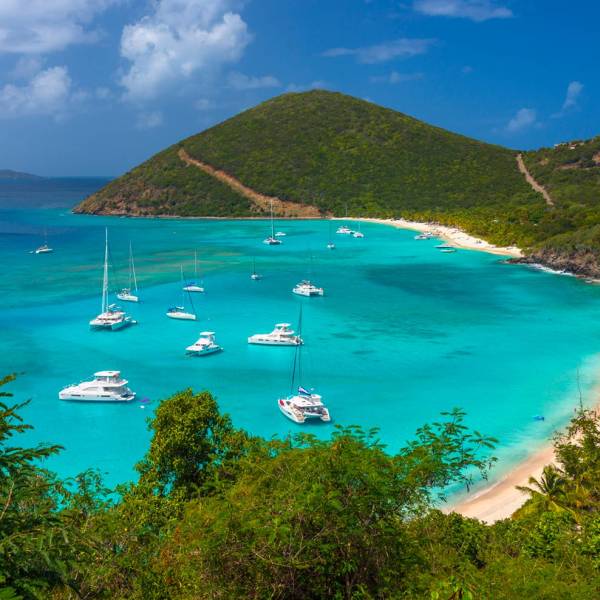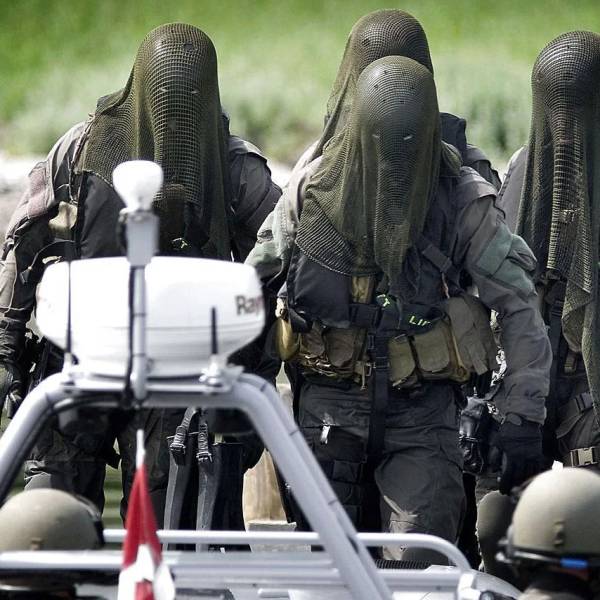British Virgin Islands the Right Way
While channeling your inner Robinson Crusoe to explore the mini caves and tunnels of The Baths might be riotous, there’s more to the BVIs than exploring this dense tuft of boulders. Or drinking ice-cold beer on a beach lounger in Cane Garden Bay, for that matter.
Heads up! This British archipelago of 50-something volcanic islands (aka Nature’s Little Secrets) is a remote Caribbean outpost for aquatic explorers and seekers of go-slow island life. In the spring, top sailors gather in its shores for an annual regatta. Throughout the year, diving enthusiasts explore its wrecks and coral reefs. And when the moon is full, revelers head for the beaches.
To experience the British Virgin Islands the right way, you must do all these and more.
Charter a boat.

Whether or not you know how to sail is hardly a factor. Charter a sailboat (there are many companies in Tortola) and hire a crew if you must. Then trick that boat out with paddleboards, unicorn floats, snorkeling gear, loads of fresh seafood, and a massive cooler of beer. Finally, sail the islands where moorings abound. You can hardly visit the Sailing Capital of the World without actually stepping foot on a sailboat, can you?
Don’t know how to sail? Learn it.
Of course, if you don’t know how to sail, there’s no better place to learn the sport than the BVIs. Set course for the Bitter End Yacht Club in Virgin Gorda. It’s one of the best resorts in the islands, and home to a fantastic sailing school. You can learn basic sailing theories in the classroom and test your skills out in the bay and even past the reef in open waters, if you’re brave enough.

Is it a sin to cast yourself away on an island resort when there’s so much of the destination to explore? At Bitter End, a few days or so is more than forgivable. Here, the vibe is unaffected, the ship cabin-esque, open air-inspired suites are comforting, its food is to die for, and there are a lot of things to occupy your time—kiteboarding a la Branson and Obama, wind surfing, and even paddleboard yoga.
Stay at an eco resort.

Drop anchor at Cooper Island where top diving site, Wreck Alley, lies close to the coast and popular snorkeling site, Cistern Point, is a quick swim away from Cooper Island Beach Club, which has 30 moorings.
If you’re missing solid ground, the non-air conditioned beach house suites at this eco-friendly resort are a breath of fresh air. A stay here means a slumber in a canopy bed, complimentary continental breakfast, and free use of stand-up paddleboards. Dine at the onsite restaurant where the hearty helpings of lunch and dinner fare are elevating. Stop by the café for the resort’s own blend of coffee and a homemade pastry. And cap the night off at the Rum Bar, which boasts one of the biggest collections of rum in the islands.
Go diving.
Sailing may be the way of life in the BVIs, but diving is its favorite pastime. The archipelago is the venue for 77 diving sites, both reefs and wrecks, for novices and advanced divers. The best ones include RMS Rhone, Chikuzen, Coral Gardens, Painted Walls, and The Blinders. Carve out some diving time and enlist the services of Sail Caribbean Divers to take you to some of them.
No SCUBA certification? Go snorkeling instead.

You don’t have to be SCUBA certified to enjoy some underwater exploring, however. Don on a snorkel mask and a pair of flippers; there are many snorkeling spots to marvel at in its teal waters. Cistern Point is just one, though it is one of the best. There is also The Aquarium near the Baths where nurse sharks may be spotted. The water at Oil Nut Bay is teeming with sea turtles and stingrays, if you prefer to see those.
Drive around Tortola.
The serpentine road that snakes around the island of Tortola, BVIs’ largest, is a drive worth ticking off your list. The island is small so it shouldn’t take more than a few hours even with all the stops you must pull over for. Start on Frenchmans Cay where locally-owned D’Best Cup Coffee Shop at Soper’s Hole offers delicious fuel for the day ahead. Then make your way around the island, taking in the colorful villages and the charming little discoveries.

Important stops include Cane Garden Bay; Good Moon Farm to meet Dominica-hailing Drake and chat about their organic farming practices; Carrot Bay; and Jenesis Studios to discover the islands’ beautiful history and even witness how locals traditionally baked cassava bread in an outdoor brick oven.

Stay on the island for a couple of days, but escape the tourist bustle at Frenchmans, a quiet, verdant, nine-villa oasis where the Caribbean Sea sparkles in a near distance everywhere you look.
Go rum tasting.
While ruins of other rum factories pepper the island of Tortola, one has remained standing, still practicing the traditional way of rum making. The historic Callwood Rum Distillery, not far from Cane Garden Bay, is one of the oldest continuous rum distillery in the Caribbean islands and another Tortola must-stop, if only for their $1 rum tastings.
Stay a little bit longer if you can; it’s worth exploring the grounds and learning about how they use a traditional sugar cane press and how they store their rum. Their rum is excellent too, so you might want to bring home a bottle or two.
Eat mangoes.
Driving around Tortola, you might see denizens picking mangoes off the trees and feasting on them on the side of the road. It’s hard not to; the islands are simply teeming with them, and the mangoes are sweet, juicy and gigantic—just the ticket for a fruity respite on a sweltering day. So enjoy one, or two, or how ever many you can get your hands on. Peel off the skin with your own hands, and eat them right off the seed. It’s the best kind of messy.
Hang out with the locals.

While in Tortola, don’t just stop by the North Shore Shell Museum in Carrot Bay, pick out a shell for purchase and leave. Egberth, former chef and owner of this quirky establishment, is a funny, effervescing dude with cool stories to tell and funny songs he’s more than happy to share with his guests. So hang out and be merry. There are conch shells to be enjoyed, graffiti to read and anecdotes to laugh over.
Attend a full moon party.

When the night sets in and that moon is full, there’s no better place to be in the BVIs than at a full moon party, a fiercely vibrant brand of revelry that’s uniquely BVI. This epic party, held in many spots all over the archipelago, involves music, face paint, poi shows, glow sticks, and at times, even hallucinogenic mushroom tea.
The colorful Bomba Shack is, of course, the most popular full moon party joint, but there are others that give it a good run for its money: Paradise Club in Cane Garden Bay and CocoMaya in Virgin Gorda, to name a couple.
Michelle Rae Uy is a freelance travel writer, editor and photographer based in Los Angeles. Follow her on her adventures onAnother Spur.






